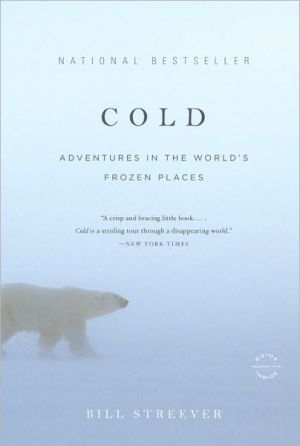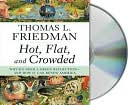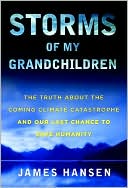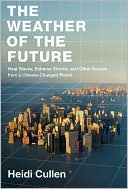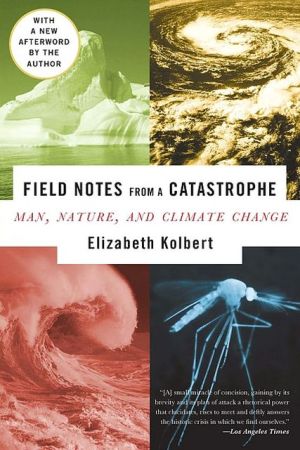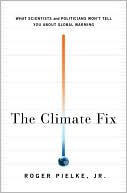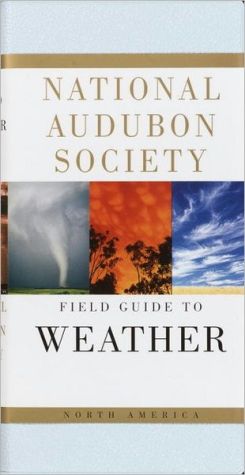Cold: Adventures in the World's Frozen Places
From avalanches to glaciers and seals to snowflakes, from igloos to icebergs, permafrost to hoarfrost, and from Shackleton's expedition to "The Year Without Summer", Bill Streever unearths the consistent, ongoing influence of cold on our culture and our planet. Evoking history, myth, geography, and ecology, Streever is a wondrous guide. He explores the hibernation habits of animals, describes how refrigeration has evolved, and takes a dip in an Arctic swimming hole. He conjures woolly...
Search in google:
From avalanches to glaciers, from seals to snowflakes, and from Shackleton's expedition to "The Year Without Summer," Bill Streever journeys through history, myth, geography, and ecology in a year-long search for cold—real, icy, 40-below cold. In July he finds it while taking a dip in a 35-degree Arctic swimming hole; in September while excavating our planet's ancient and not so ancient ice ages; and in October while exploring hibernation habits in animals, from humans to wood frogs to bears.A scientist whose passion for cold runs red hot, Streever is a wondrous guide: he conjures woolly mammoth carcasses and the ice-age Clovis tribe from melting glaciers, and he evokes blizzards so wild readers may freeze—limb by vicarious limb. The New York Times Book Review - Mary Roach I've probably read some of this elsewhere, but Streever explains in a way that makes things stick…He sculptures lucid explanations and fires them with fine writing…Cold is a love song to science and scientists, to Earth and everything that lives on and flies over and tunnels under it. It's impossible to read the book and not fully realize that our planet must be protected.
Author's Note xivPreface xvJuly: Explorers, victims of cold, and immersion in thirty-five-degree water north of the Arctic Circle 3August: A tunnel in ground frozen for forty thousand years, landscapes changing as temperatures rise, and animals harmed warmth 28September: The Little Ice Age, the Pleistocene Ice Age, and the ancient ice age of Snowball Earth, when the entire planet was veiled in ice 50October: Animals coping with cold, migrating by the millions, and hibernating with body temperatures below freezing 75November: Skis and skiing, a trail closed by a late-season bear, and freezing trees releasing a burst of heat and flushing the fluid from their cells 94December: Overheating in the depths of winter, shadows of Weddell seals in the sea ice, and Japanese ama divers in water cold enough to kill most humans 114January: Weather patterns that cause frigid conditions, medieval weather forecasters burning at the stake, and a frozen ocean 136February: Plummeting temperatures, the cooling of Westminster Abbey, and approaching absolute zero and the death of matter 156March: A search for polar bear dens near forty below zero, winter apparel, igloos, quinzhees, and a house instrumented to measure cold 175April: Frost-heaved roads, broken pipes, crops destroyed by frost, and 143 caribou killed by an avalanche 191May: The end of the Pleistocene Ice Age, rising sea levels, howling winds, receding glaciers, and mammoth carcasses in thawing ground 208June: Fourier's greenhouse effect, Revelle's geophysical experiment, debating science, and the melting Beaufort Sea 227Maps 244Acknowledgments 247Notes, with a Few References, Definitions, Clarifications, and Suggested Readings 249Index 285Readindg Group Guide 293
\ Mary RoachCOLD is a love song to science and scientists, to Earth and everything that lives on and flies over and tunnels underneath it.\ — New York Times Book Review (cover review)\ \ \ \ \ David LaskinStreever demonstrates an amazing zeal for collecting cold facts. If it hibernates, shivers, glaciates, migrates to the poles, skis, feels compelled to reach Ultima Thule or absolute zero, Streever is hot on its trail. His attention span may be somewhat limited—he prefers skimming along crystalline surfaces to probing gelid depths—but his voice is so engaging and his writing so crisp that I was usually happy to keep him company wherever he zigzagged. Certainly, I was never bored.\ —The Washington Post\ \ \ Dwight GarnerThis crisp and bracing little book …is an unusual and welcome addition to the literature of cold weather and the great north…one that moves easily from geography and biology to history, myth and folklore. Mr. Streever's writing style feels original and organic: it is flinty and tough-minded, with just enough humor glowing around the edges to keep you toasty and dry.\ —The New York Times\ \ \ \ \ Mary RoachI've probably read some of this elsewhere, but Streever explains in a way that makes things stick…He sculptures lucid explanations and fires them with fine writing…Cold is a love song to science and scientists, to Earth and everything that lives on and flies over and tunnels under it. It's impossible to read the book and not fully realize that our planet must be protected.\ —The New York Times Book Review\ \ \ \ \ Publishers WeeklyCold weather systems the earth needs to thrive is the subject of Streever's well-documented book, using all of the author's expertise from his field trips to the world's most frigid environments. Streever, who chairs the North Slope Science Initiative's Science Technical Advisory Panel, writes of the frostiest experience: "We fail to see cold for what it is: the absence of heat, the slowing of molecular motion, a sensation, a perception, a driving force." Rather than giving the reader a dry, academic lecture on snow, glaciers, wind-chill factors and icebergs, he delivers a poetic, anecdotal narrative complete with polar expeditions, Ice Age mysteries, igloos, permafrost and hailstorms. Two of the most fascinating segments are the arduous task of scientific reconstruction of past climates and the magical navigation of migratory birds to warmer lands. This is a wonderful collection of one man's first-rate observations and commentary about the history and importance of cold to the earth and its occupants. (July)\ Copyright © Reed Business Information, a division of Reed Elsevier Inc. All rights reserved.\ \ \ \ \ Library JournalOpen this book to any page and be treated to a tidbit about the cold, its effects on animals, on history, on the world. Do frogs and caterpillars actually freeze solid and then revive in spring? Have you ever heard of the School Children's Blizzard that froze cattle standing in place? What is the difference between hypothermia and frostbite? Biologist Streever explores benign cold, threatening cold, and monstrous/scary cold not only through history and science books but also in person, in Alaska and other frozen spots around the world. The author knows what he is talking about. He has worked in Arctic Alaska and chairs the Science Technical Advisory Panel of the North Slope Science Initiative. This reviewer found Streever's book more consistently enticing than Mariana Gosnell's Ice: The Nature, the History, and the Uses of an Astonishing Substance. Written in a popular, accessible style, Streever's book also includes 34 pages of notes. Recommended for public libraries.\ —Betty Galbraith\ \ \ \ \ \ Kirkus ReviewsAn unexpectedly fascinating look into a seemingly banal subject. Alaska-based biologist Streever spent a year documenting the nature and science of cold. "Cold is a part of day-to-day life," he writes, "but we often isolate ourselves from it, hiding in overheated houses and retreating to overheated climates, all without understanding what we so eagerly avoid." With simple prose and a strikingly immediate present tense, the author carves landscapes, scientific processes and neat anthropological factoids out of the ice, a style guaranteed to transport readers into the unfamiliar-indeed, otherworldly-dimensions he describes. Streever, who uses science as a launching point for discussions of some of history's most memorable events, renders complicated biological theories eminently understandable. His treatment of 1815, "The Year without Summer," pieces together the seemingly unrelated events of an Indonesian volcano eruption, the origins of Mary Shelley's Frankenstein and the founding of the Mormon Church in a passage that will leave readers wholly impressed by the scope of the author's grasp on his subject. There's humor, too, in deftly crafted witticisms that pop up throughout the text: "When one reads past the stoicism and heroics, the history of polar exploration becomes one long accident report mixed with one long obituary"; "Cold, really, is like malaria. If it does not kill you, it will help you lose weight." With aplomb, Streever charts a meandering course of the land around him, providing an enthralling tour through haunting arctic tundra, permafrost tunnels of 40,000-year-old ice and the winter dens of hibernating beasts. A seamless blend of travelogue, history and scientifictreatise. Agent: Elizabeth Wales/Wales Literary Agency\ \
